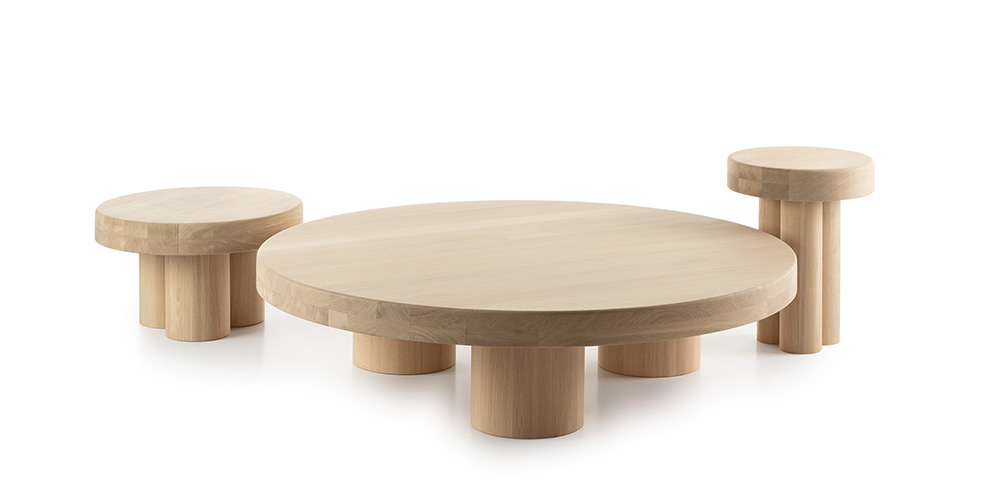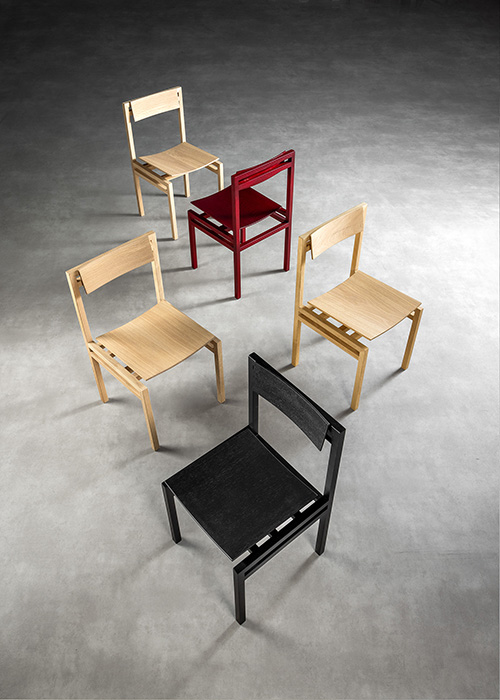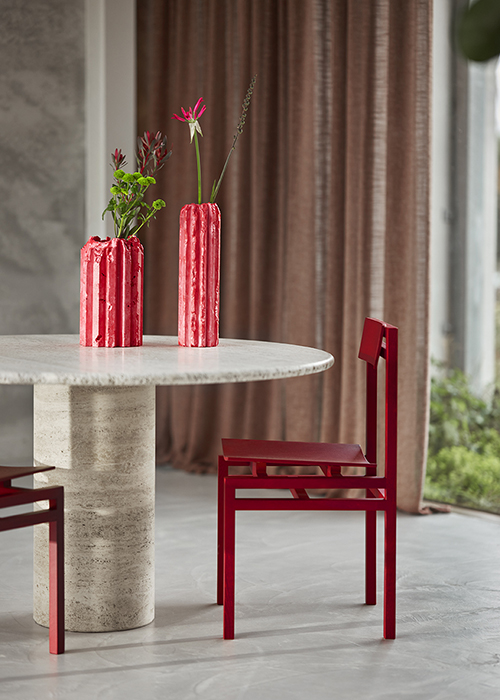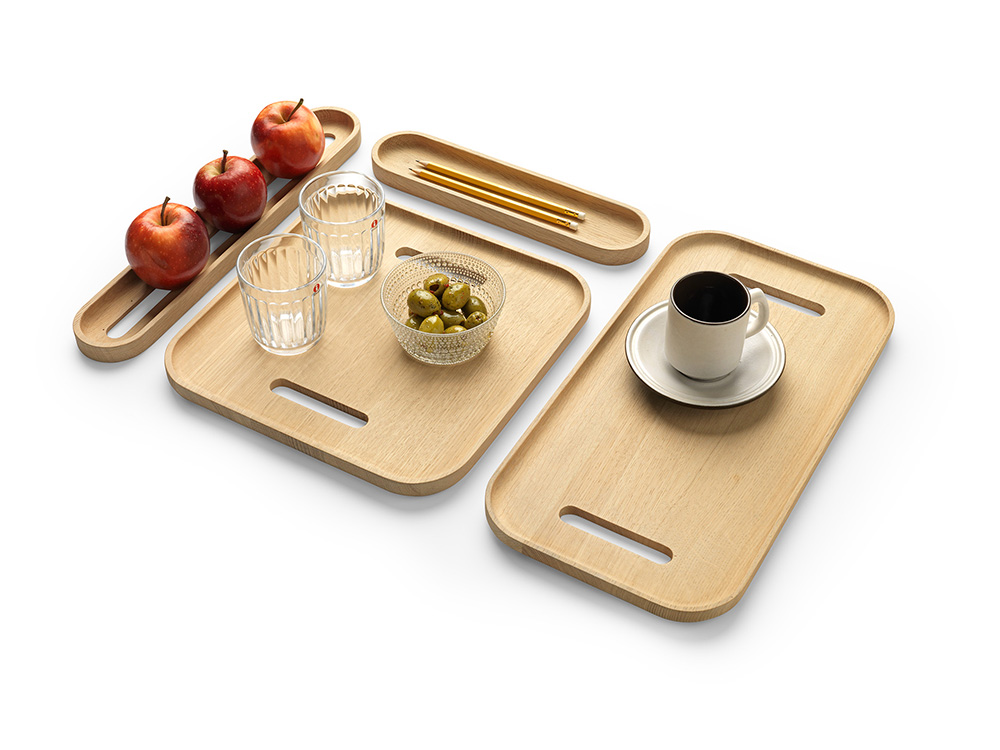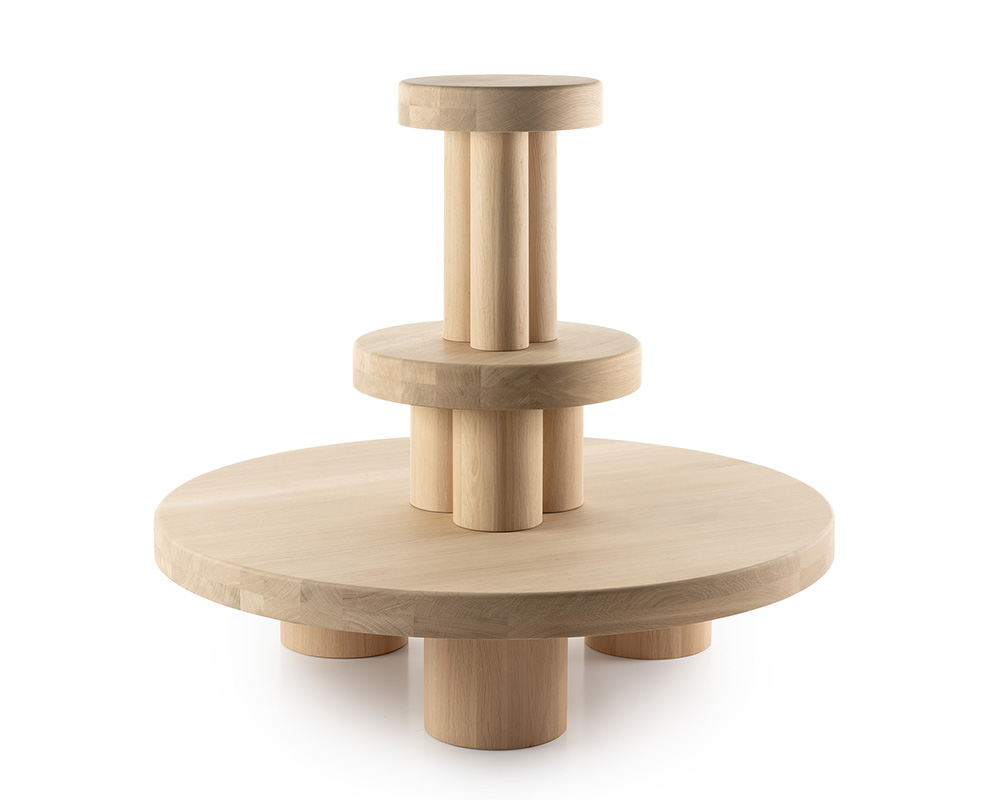
Back to the future
A fascinating re-design of an iconic mid-century chair demands closer inspection.
A trio of robust coffee tables pays tribute to the firm’s early years. A collection of multifunctional home accessories makes use of residual waste. The past is a source of inspiration. Back to the future is a form of upcycling.
The Haus Chair fascinates with its architectonic play of lines and floating, curved forms. The frame is perfectly straight and defines the boundary surfaces in a cubist style. Within, the seating comfort unfolds with gently curved, sloping surfaces. The seat appears to float freely above the frame. The backrest is ‘barely’ attached to the frame, and hangs partly free. Interfaces have been reduced to tangent points. The illusionary design separates and connects straight and round shapes, geometric and ergonomic parts into a harmonious whole. Today’s construction is based on deconstruction.
The Haus Chair is based on the Coventry Cathedral Chair (1962, design Dick Russell). The British Studio Claud Christian has devised the deconstructive redesign and significantly corrected the seating comfort, among other things. What is absolutely preserved? The straight contours so that the seats can always stand seamlessly against each other. Side by side, back to back, back to side.
The Thick Wood coffee tables reference the oak furniture from the company’s early years. Back then, the motto was the thicker the oak, the better the furniture. At that time, no one was rationing the use of trees. The Thick Wood tables pay tribute to that era. Hence their thick tabletops and robust feet. The style has been adapted, because the traditional rustic look is truly outdated now. The biggest difference to back then is that sustainability now plays a key role.
This green frame of mind has also resulted in the TVO collection, a tip and design by Thien Vo. Residual waste is used to create solid wood home accessories. For now, the collection comprises a pen holder, a square and an elongated tray, and a fruit bowl. These are both practical to use and decorative, and offer a great alternative to discounting: a tangible object to give away. An enduring addition to the interior. A special reminder of the purchase of that table, chair, or cabinet.
